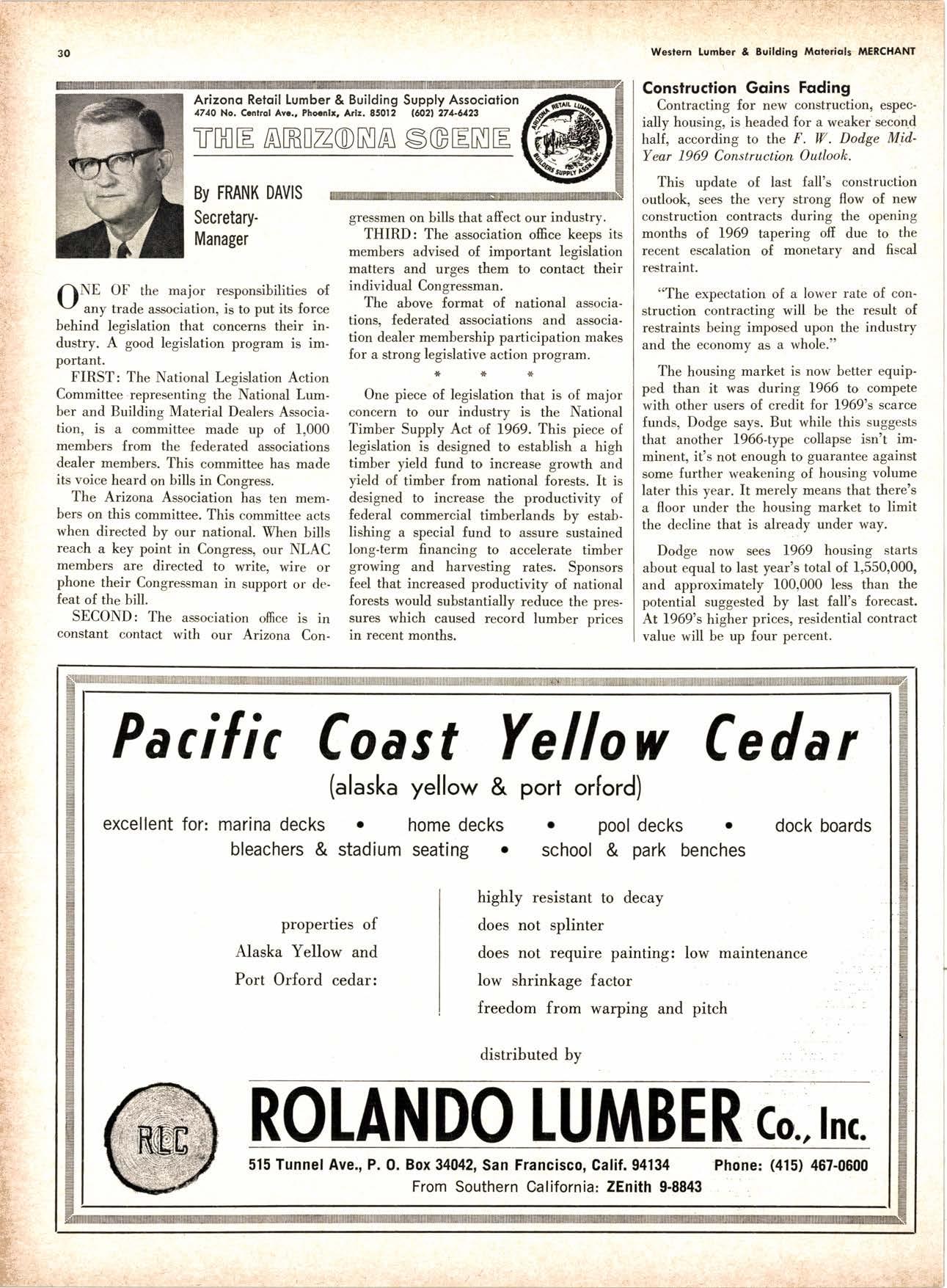
1 minute read
]THE ARIZONA SGtrNE
By FRANK DAVIS
SecretaryManager
ONE OF the major responsibilities of - "ry trade association, is to put its force behind legislation that concerns their industry. A good legislation program is important.
FIRST: The National Legislation Action Committee representing the National Lumber and Building Material Dealers Association, is a committee made up of 1,000 members from the federated associations dealer members. This committee has made its voice heard on bills in Congress.
The Arizona Association has ten members on this committee. This committee acts when directed by our national. When bills reach a key point in Congress, our NLAC members are directed to write. wire or phone their Congressman in support or defeat of the bill.
SECOND: The association office is in constant contact with our Arizona Con- gressmen on bills that affect our industry.
THIRD: The association office keeps its members advised of important legislation matters and urges them to contact their individual Congressman.
The above format of national associations, federated associations and association dealer membership participation makes for a strong legislative action program.
One piece of legislation that is of major concern to our industry is the National Timber Supply Act of 1969. This piece of legislation is designed to establish a high timber yield fund to increase growth and yield of timber from national forests. It is designed to increase the productivity of federal commercial timberlands by establishing a special fund to assure sustained long-term financing to accelerate timber growing and harvesting rates. Sponsors feel that increased productivity of national forests would substantially reduce the pressures which caused record lumber prices in recent months.
Construclion Goins Foding
Contracting for new constluction, especially housing, is headed for a weakersecond half, according to the F. W. Doilge Mid' Year 1969 Construction Outlook.
This update of last fall's construction outlook, sees the very strong flow of new construction contraets during the opening months oI L969 tapering ofi due to the recent escalation of monetarv and fiscal restraint.
'oThe expectation of a lower rate of construction contracting will be the result of restraints being imposed upon the industry and the economy as a whole,"
The housing market is now better equipped than it was during 1966 to compete with other users of credit for 1969's scarce funds, Dodge says. But while this suggests that another 1966-type collapse isn't imminent, it's not enough to guarantee against some further weakening of housing volume later this year. It merely means that there's a floor under the housing market to limit the decline that is already under way.
Dodge now sees 1969 housing starts about equal to last year's total of 1550,000, and approximately 100,000 less than the potential suggested by last fall's forecast. At 1969's higher prices, residential contract value will be up four percent.










